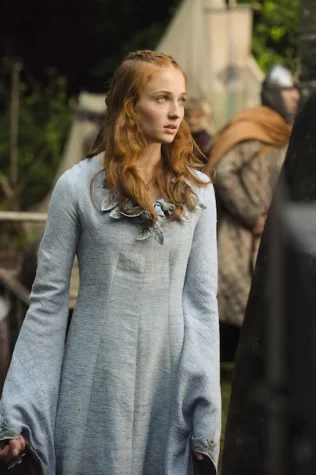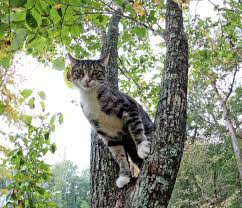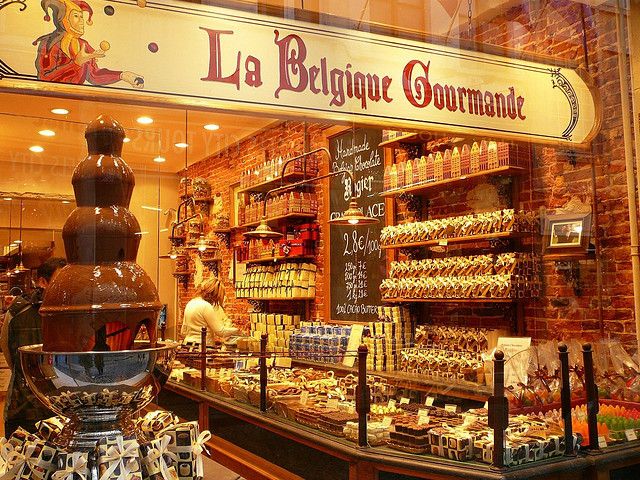‘Game of Thrones’s Sansa Stark’s Character Evolution Through Costuming

November 20, 2022
Game of Thrones was a wildly successful TV show and book series, originally authored by George R. R. Martin. The show takes place in a fantasy world with a feudalistic political setup, being ruled by a plethora of lords and ladies who are all subservient to a king. Many families of different estates are followed throughout the show as they scheme their way to the Iron Throne, the most prominent of which is the Stark family. The Starks are the first family introduced and they quickly become the protagonists and fan favorites of the series. Each member of the Stark family has their own unique storyline as they navigate the complications of life in Westeros. Sansa Stark began the show as a naive 13-year-old girl who wants nothing more than to be married and away from her home of Winterfell. By the end of the show, she had hardened into a 20-year-old monarch who rules the North. Likewise, her costuming throughout the course of Game of Thrones is extremely symbolic of her character development.

In season one, Sansa wears a lot of light-colored clothing. This juxtaposes the dark, gloomy fashion of the North around her. Sansa’s choice to wear light-colored dresses shows her desire to escape Winterfell and be like the ladies in Southern Westeros. In addition to the color of her outfits, her choice to wear elegant dresses rather than the more practical fur coats of those around her also exhibits her yearning for the South; she wants to appear more elevated and regal than her more “primitive” Northern counterparts.

Once Sansa travels to the South, she begins to mimic the styles of the Southern women, namely Cersei, the queen regent. Sansa’s septa even remarks on this change, telling her she looks more and more like a Southern woman each day after Sansa begins styling her hair in the Southern fashion with an elaborate updo over the head and two curled pieces crossed at the back of the neck. At this point in the show, Sansa still desires to be a lady of the South and strongly looks up to the women of the Southern court.
After the death of her beloved father, Ned Stark, Sansa becomes more of a prisoner at King’s Landing than a guest. Her betrothal to Joffrey Baratheon turns sour and she is subject to his inhumane whims of cruelty. As this change is taking place, Sansa assimilates even further to the style of the South to avoid being singled out and compared to her father, who the entirety of King’s Landing views as a traitor. She frequently wears red-hued dresses, the color featured on the sigil of her captors, House Lannister. Sansa continues to style her hair like Cersei in addition to her adoption of Cersei’s wardrobe choices. This is all in an attempt to blend in with the women of King’s Landing. However, when previously she sought to dress like the Southern women out of admiration for them, she now does it in order to avoid sticking out.

In season two, a new key character comes to King’s Landing: Margaery Tyrell. Margaery quickly becomes Sansa’s new source of inspiration. Margaery is confident, smart, and able to outwit the Lannisters into getting what she wants. All of these characteristics make Margaery Sansa’s new hero. This is reflected through Sansa’s hairstyles, which quickly come to mimic Margaery’s. Lord Petyr Baelish, like the septa in season one, comments on this change, saying “Your hair is different. Lady Margaery wears it that way”. Once again, Sansa’s wardrobe is indicative of her character, exhibiting her admiration for Margaery Tyrell.

Sansa undergoes a dramatic transformation after she is nearly murdered by her aunt Lysa. This was Sansa’s last straw after a long line of indignities against her. She steps out of her chambers after this near-death event in one of her most iconic dresses in the show, commonly referred to by fans as the Dark Sansa dress. Sansa sewed this dress out of raven feathers and it marks the first time we see the more calculating, vengeful side of Sansa, clothed in all black. The raven feathers are also symbolic of the patronizing nicknames she had been called in King’s Landing such as “little dove” and “little bird”. By sewing raven feathers into her dress, Sansa is taking back this nickname and ceasing to give it power over her.

By the end of the show, Sansa has clearly come into her own, something that is reflected in her wardrobe. She wears wolf furs over her shoulders, paying homage to Winterfell; the place that she once tried so hard to escape becomes somewhere Sansa fiercely defends. She also frequently dons armor and dresses in all black, showing her warrior side and how far she has come from the meek preteen girl she once was. Costume designer Michele Clapton describes her look in the final seasons: “It’s this idea of being wrapped and unavailable and not feminine. It’s sort of halfway, not masculine and not feminine, it’s just Sansa.”
Sansa undergoes drastic character development throughout Game of Thrones, transitioning from a quiet, demure child to a strong, commanding queen. She is shaped by her circumstances, hardened by years of abuse, grief, sexual assault, and contempt. Her costuming for the duration of the show reflects her transformation and who she is influenced by at each time of her life.

























